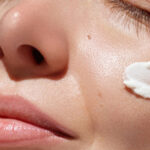
The Science of Acid Layering vs. Precision Protocols
by Aurora Solis
In the world of advanced exfoliation, few topics stir as much curiosity and confusion as acid stacking. The practice of layering multiple acids in a single treatment session has become popular in both clinical and holistic skincare spaces, promising to deliver compounded results through synergy. However, this trend calls for a deeper understanding of skin physiology, ingredient chemistry, and treatment strategy.
Acid stacking, when done correctly, can deliver dramatic improvements in tone, texture, and overall skin clarity. It offers the ability to target multiple concerns at once. For instance, using salicylic acid to clear pores while layering mandelic acid for its brightening and antibacterial properties. But this technique is not without its risks. The skin’s natural acid mantle operates within a narrow pH range, and disturbing this balance with too many low-pH actives can compromise the skin barrier, leading to inflammation, sensitization, or post-inflammatory hyperpigmentation (PIH).
The key to intelligent acid stacking lies in understanding the pKa value of each acid, which refers to how much an acid dissociates in solution and how it interacts with the skin’s natural pH. Glycolic acid, for instance, has a very low pKa and a small molecular size, allowing it to penetrate quickly and deeply. This makes it a powerful exfoliant, but also a potentially irritating one if not used carefully. Pairing glycolic acid with lactic acid, which is larger and more hydrating, can mitigate some of its intensity. However, layering glycolic with other low-pKa, small-molecule acids may be too aggressive for most skin types.
Single-acid protocols offer more control and predictability. For example, mandelic acid is an excellent choice for clients with acne-prone or pigmented skin, especially in higher Fitzpatrick types, due to its gentle action and antibacterial benefits. Lactic acid works beautifully on dry, dehydrated skin due to its humectant nature. By using a single acid, estheticians can assess how the skin responds and adjust the treatment plan accordingly.
It’s also important to consider client history. Has the client been exfoliating at home? Do they have a compromised barrier from previous peels, sun exposure, or acne medications? These factors significantly impact how well their skin will tolerate acid stacking. Barrier-first skincare, which prioritizes the skin’s integrity over aggressive exfoliation, is an emerging philosophy that aligns well with single-acid approaches.
When acid stacking is employed, spacing between layers is crucial. Allowing each acid time to absorb and act before applying the next can reduce the risk of irritation. Neutralization and post-treatment care should also be carefully considered. Supporting the skin with calming ingredients such as hyaluronic acid, panthenol, and beta-glucan can help soothe any potential irritation.
Client education is another cornerstone. Clients often associate tingling or peeling with efficacy, but estheticians must reframe these perceptions. True skin transformation comes from consistency and tailored treatment, and not just intensity. Whether stacking or sticking with one acid, the goal is always to improve the skin’s health, not to strip it down.
In conclusion, acid stacking isn’t inherently better or worse than single-acid protocols. It’s about choosing the right tool for the job. Mastery of exfoliation lies in personalization, and with the right knowledge, estheticians can confidently guide their clients toward radiant, resilient skin.












